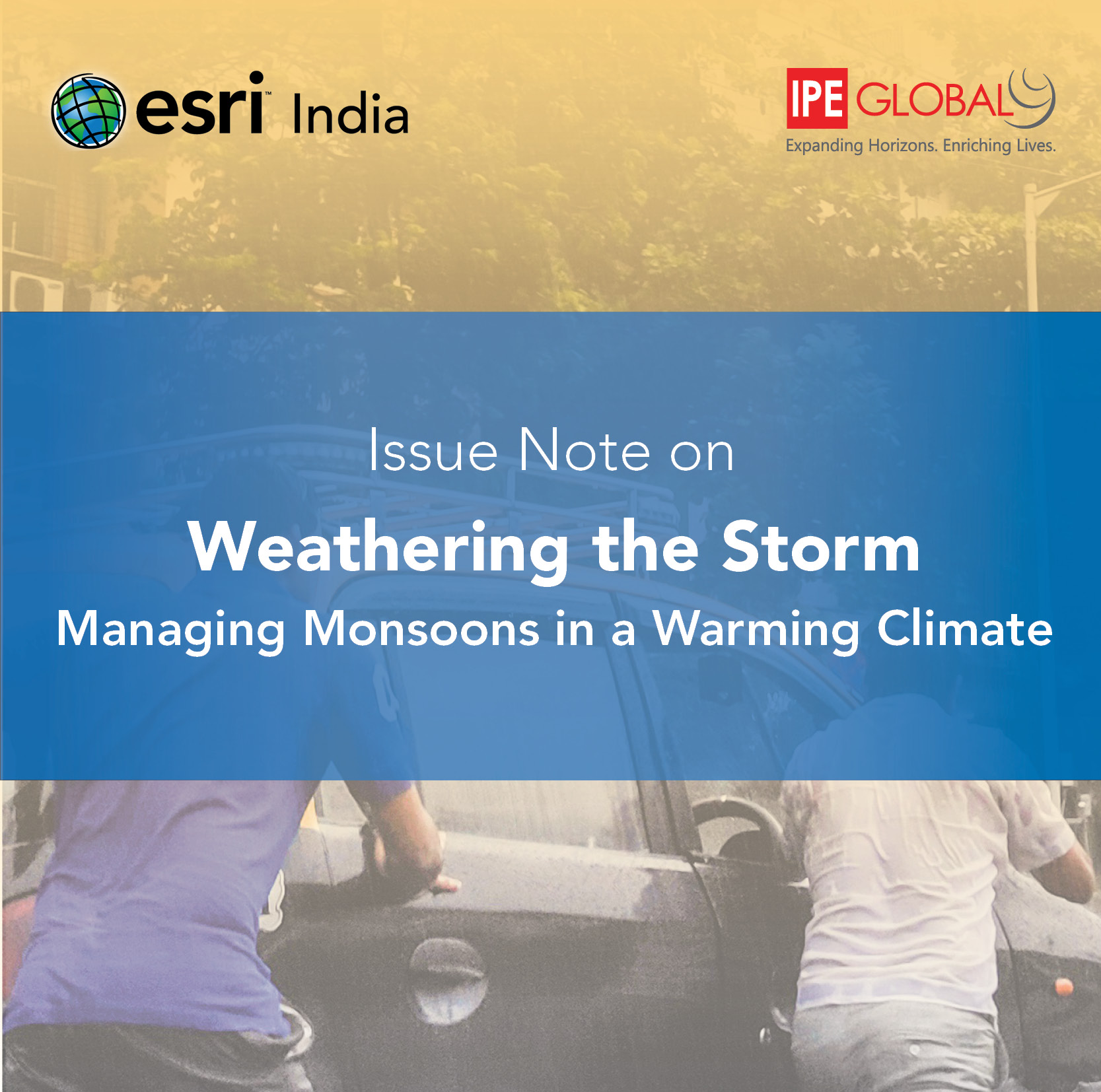Authors: Abinash Mohanty*, Krishna Vsav
The intensification of climate extremes is reshaping risk landscapes across the world, with profound socio- economic consequences. India, ranked as the seventh most vulnerable country to climate risks (Germanwatch, 2020), faces escalating climate-induced disasters, incurring an estimated annual loss of USD 87 billion due to extreme weather events (WMO, 2020). Using the Climate Risk Observatory tool, developed by IPE Global and Esri India, the study presents a pioneering effort, analysing district-level spatial and temporal assessments coupled with dynamic ensemble climate modelling to develop heat stress scenarios for 2030 and 2040, thus scientifically correlating how it can trigger incessant and erratic extreme rainfall events.
The findings reveal, by 2030, climate change is expected to drive 43 per cent rise in intensity of extreme rainfall events across India, making the country hotter and wetter. Mumbai, Chennai, Delhi, Surat, Thane, Hyderabad, Patna and Bhubaneswar are projected going to witness two-fold increase in heat wave days. Extended heat wave conditions are likely to trigger more frequent, and incessant and erratic rainfall events. 8 out of 10 districts in India are going to experience multiple instances of incessant and erratic rainfall by 2030. The frequency, intensity, and unpredictability of these extreme heat and rainfall events have risen significantly in recent decades. India has witnessed a 15-fold increase in extreme heat wave days across the March-April-May (MAM) and June-July-August-September (JJAS) months in last three decade (between 1993-2024). Alarmingly, the last decade alone has witnessed a 19-fold increase in extreme heat wave days. We found that the monsoon season in India is witnessing an extended summer like condition except on non-rainy days. More than 75 per cent districts in Gujarat, Rajasthan, Tamil Nadu, Odisha, Uttarakhand, Himachal Pradesh, Maharashtra, Uttar Pradesh, Meghalaya, and Manipur will be witnessing the double whammy on heat stress induced erratic and incessant rainfall by 2030. These districts will at least witness one instance of heat wave during March, April and May months by 2030.
Given the scale and severity of these impacts, we emphasise the need for urgent, science-driven policy interventions. We advocate for the establishment of a Climate Risk Observatory (CRO) to provide real-time risk assessments at national, devising risk financing instruments to mitigate heat risk and extreme rainfall events. The study also suggests appointing heat-risk-champions within district disaster
management committees- this will allow these agencies to prioritise and unify the heat-risk mitigation efforts at the district level and, consequently, accelerate heat resilience.
Suggested citation: Mohanty, Abinash*, Krishna Kumar Vsav, 2025, Weathering the storm. New Delhi, IPE Global and Esri India.
*Corresponding Author abinashm@ipeglobal.com









